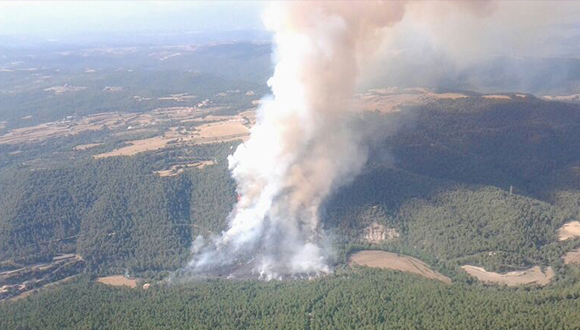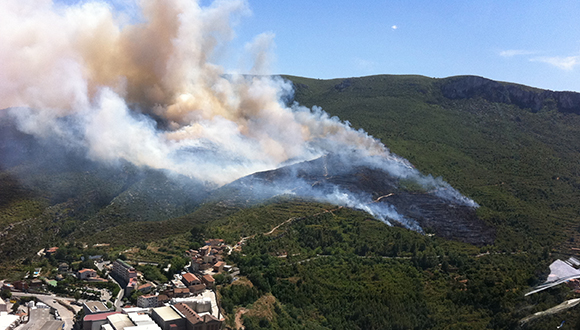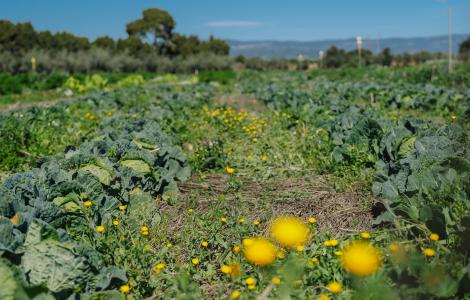Mathematics will help us to predict which kind of fire each landscape will have
The mathematic model developed by CREAF and CTFC is able to estimate the probability a landscape has to suffer a wind-driven fire, a topographic fire or a fuel driven fire. This tool could be used to improve fire suppression strategies and adapt prevention measures in front the new climate change scenario.

A research team from CREAF, from the Centre Tecnològic Forestal de Catalunya (CTFC) and from the GRAF-Technical Unit from Bombers de la Generalitat de Catalunya have found the formula to know the probability a landscape has to experience different kinds of fires, according to vegetation, topography and climate characteristics.
The researchers have analized wildfire data occurred in Catalonia in the last twenty years.
The work, published in the International Journal of Wildland Fire, shows a pattern for each of the three kinds of fire spreads identified by firefighting teams. “Fires driven by relief shapes, which are moved by air movements similar to breezes, depend on factors as slope or aspect. These fires are the less dangerous and easy to control”, explains Andrea Duane, CTFC researcher and first author of the study.
Convective fires, the second type of fires, appear in places where large biomass amounts are accumulated and fuel is highly available. These fires spread fiercely in all directions and are considered as the largest and most destructive ones. “These wildfires emerge at the beginning of the 90s as a consequence of a progressive rural and forest traditional activities abandonment, together with a lack of forest management”, explains Míriam Piqué from CTFC.

The third type of fires are spread by wind and depend on factors that cannot be modified, as the same wind or topography. “Wind-driven fires are very dangerous and difficult to control, since wind direction and intensity can suddenly change. Furthermore, their preventive management implies an added challenge, since they highly depend on climate variables difficult to manage”, says Marc Castellnou from GRAF-Bombers.

Useful for fire prevention and management.
The researchers affirm that this work opens the possibility to develop new landscape and forest management strategies according to the different kinds of fire. “If we know the variables inducing one type of fire or other, we could apply different management options. Then, it will not only help to plan firefighting strategies in front wildfires, but it would help us to act preventively”, comments Lluís Brotons, CREAF researcher at CTFC, highlighting the need of forest management and understory thinning to reduce the magnitude of some wildfires.
"If we know the variables inducing one type of fire or another we could apply different management options"
Wildfires and climate change
The study can have a great impact in the research of fire regimes in a global change scenario. “We are under a context where we don’t know how future wildfires will be. What we do know is that environmental changes as land use changes or vegetation changes will change forest structure, and consequently, it could also change wildfire dynamics”, concludes Andrea Duane.
Autora: Marina Torres Gibert






